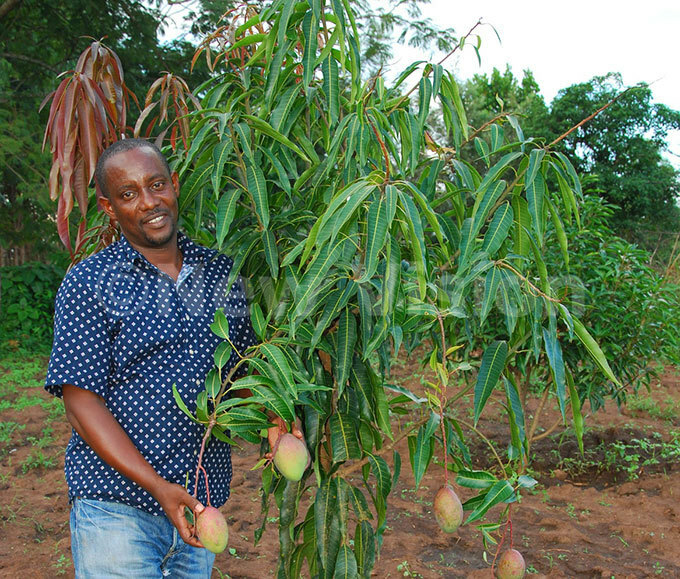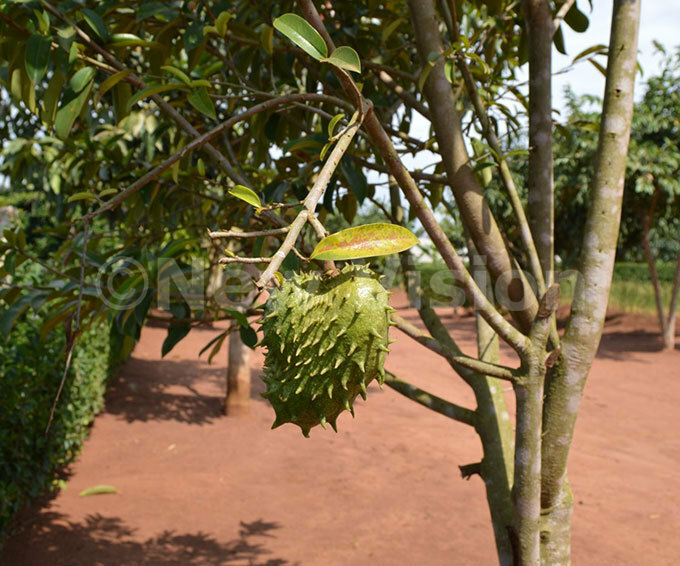Use fruits to add beauty to your compound
Fruit trees also act as fencing or barriers against intruders, especially the kind that has hardwood and thorns.
GARDENING
Fruits are vital in everyone's diet, given their high nutritional value, especially as a source of vitamins. And as nutritionists recommend, fresh fruits are the best source of these nutrients.
It is, therefore, vital for every home to have a fruit tree or two. Rose Gitta a professional gardener says fruit trees are not only a favourite for diet, but also add beauty to the compound, since most of them bloom flowers before bearing fruits.
He adds that they also act as wind-breakers in the compound and also provide children with a learning experience as they watch them grow.
Fruit trees also act as fencing or barriers against intruders, especially the kind that has hardwood and thorns. Below are examples of fruit trees that can be grown in the compound.

Mango tree
This is a favourite fruit for many and can grow up to 30meters tall. There are currently a number of mango tree varieties, especially the hybrid types that one might not even need to climb to harvest because they fruit at very short heights.
A mango fruit varies from five to 30cm (2-12 inches) in length and may weigh from 100g to about 2kgs.
Mango trees grow under warm, sunny conditions and prefer well-drained, sandy, loamy and medium clays and also do well under a PH of between 5.5 and 7.5. PH refers to the soil's level of acidity or alkalinity
The trees should be shielded from strong winds, especially when still young.
Guava
They are both sweet and sour guava varieties. They grow up to 8m (25ft), spreading wide to about 7m (22ft). The guava grows best under temperatures of 220C-280C, with humidity levels of 70% or less.
Loquats (eriobotrya japonica)
This is locally known as enkomamawanga, a favourite for young children. These are attractive evergreen plants, growing up to 7m (40ft) tall, with a spread of about five metres. They flower and fruit regularly.
Oranges
These require deep, well-drained loamy soils to bear healthy fruits and have a longer life.
Orange trees should be grown at least 12 feet from the house, driveways or walkways. They grow and produce best in full sun. It also has dwarf varieties that can be grown in containers.
Passion fruit trees
It has large white and purple flowers and bears purple-black fruit. It is preferred specie for the backyard.
The ideal spot for growing passion fruit vines is on the fence, balcony or over a pergola. This enables you enjoy a year-round shade.

Coconut palms
These make great visual additions to the landscape. They are good for framing a landscape background and also look attractive next to pathways or drive ways.
They require a location with full sunlight and can survive under various soil types, ranging from clay to sandy and from acidic to alkaline, but these should be well-drained.
Coconut palms are not recommended around sitting areas because the falling fruits may turn into a safety hazard.
Lemon trees
Other than just providing fruits, lemons are famed for their refreshing scent. Standard trees can reach more than 20 feet high and require regular pruning to make sure the fruit is within reach.
Jack fruit trees
This is an erect, evergreen, fairly large tree, 30 to 40 feet (9-12 m) tall. The tree flourishes in rich, deep soil of medium or open texture.
Pawpaw (papaya)
This is a single stemmed tropical tree which grows up to 4-5m (12-15ft) in height. Papayas adapt to well-drained soil. The plant is shallow rooted and will not tolerate excessive wetness or standing water and thrives best in full sun.
Some wind protection provided by other plants or structures is vital. Papaya fruit is a berry with a thin, smooth peel and thick, fleshy mesocarp surrounding an open cavity containing many small seeds and can measure up to 10kgs in weight.
Berries
These are in a number of varieties like the black, blue or red raspberries, boysen berries and strawberries.
Berries make excellent shrubs and hedges. They can also be grown as foundation plantings along your house or as an informal hedge in the backyard.
Some types of berries have thorny characteristics, which when planted along the fence or wall or as a hedge, can keep away intruders such as cats, dogs and wildlife.
They can grow in every garden and do not require a lot of care.
Positioning fruit trees in the compound
Gardening experts note that fruit trees can be scattered in the compound, depending on their height. Shorter trees blend in well in the front yard, while taller ones are better off at the back.
Fruit trees like coconuts can be grown along the walkways, borders or driveway. They can also be planted with flowers in the background or as a screen on the walls.
You can also choose to have a backyard garden if you have a big compound and this can enable you have a variety of fruits.
Fruit trees can also be grown in containers or directly in the ground, but this depends on the size of the tree and size of the compound.
Cost
Fruit trees are available in plant nurseries around town. Prices are from sh3,000 and above, depending on the species.